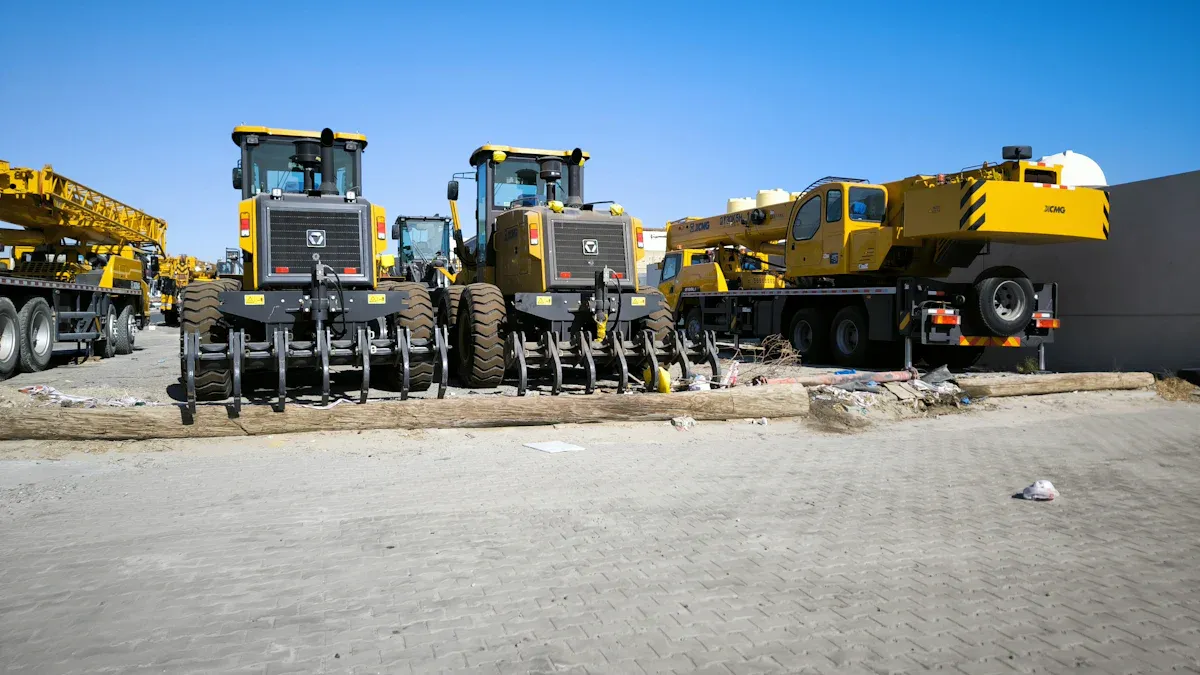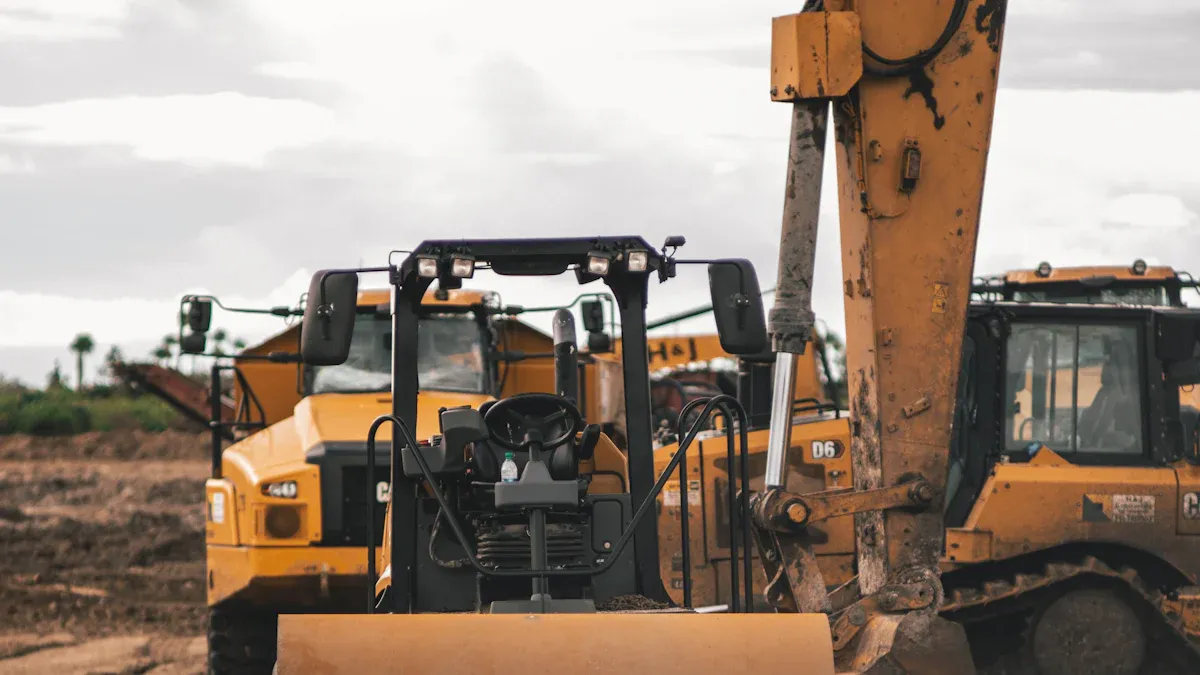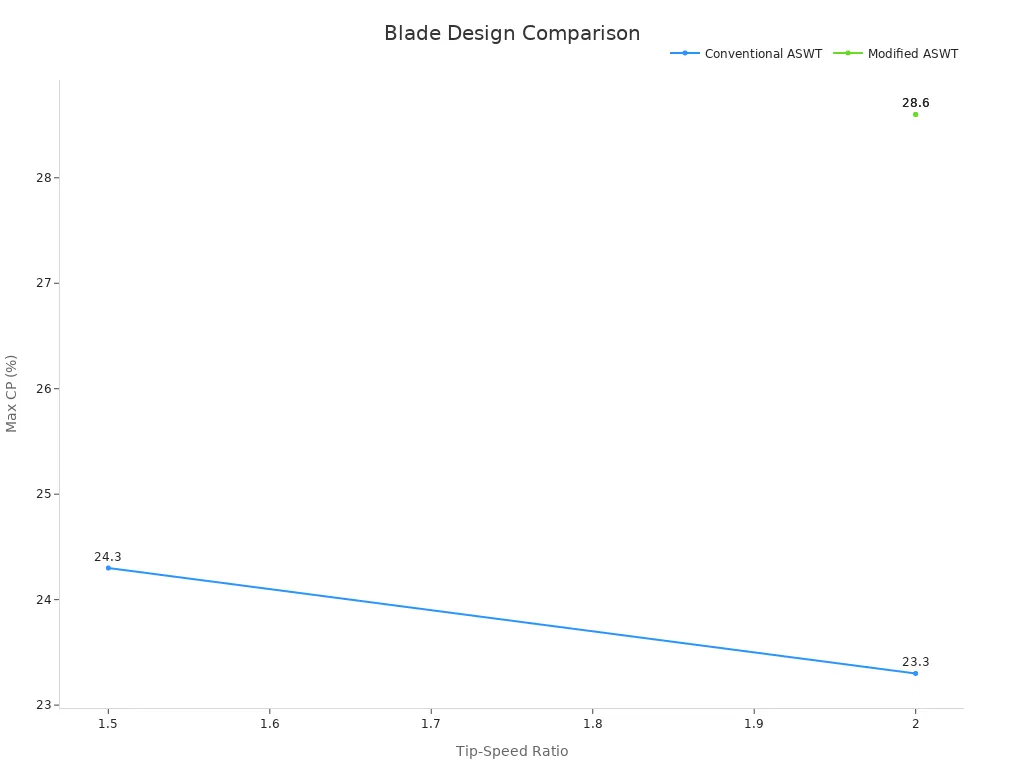
Asphalt paver blades stand out for their ability to endure tough conditions. You rely on them to handle extreme heat, constant friction, and abrasive materials without losing efficiency. Their durability comes from high-quality materials, advanced designs, and precise manufacturing techniques. These blades resist wear and tear, ensuring consistent performance. With proper care, they can last even longer, saving you time and money. By understanding what makes them so strong, you can appreciate their value in pa ving operations.

The durability of asphalt paver blades begins with the materials used in their construction. Hardened steel and high chrome cast iron are two of the most reliable materials for these blades. Hardened steel offers exceptional strength, making it resistant to bending or breaking under heavy loads. High chrome cast iron, on the other hand, provides superior hardness and wear resistance, which is essential for handling abrasive materials like asphalt.
High chromium white cast iron exhibits various matrix structures depending on its treatment state. The tempered state delivers the best performance in high-stress applications by enhancing surface hardness and reducing wear. Heat treatment, especially tempering at medium temperatures, signi ficantly improves the material's mechanical properties.
These materials ensure that asphalt paver blades can withstand the intense demands of paving operations, maintaining their structural integrity even in high-stress environments.
Asphalt paver blades face constant friction and extreme heat during operation. The materials used in these blades are specifically chosen for their ability to resist these conditions. Hardened steel and high chrome cast iron undergo rigorous testing to ensure they can handle the wear and tear of daily use.
| Test Type | Description |
|---|---|
| Abrasive Wear Test | Conducted using a ball-on-fla t tribometer under varying loads to assess wear resistance. |
| Corrosion Test | Utilized potentiodynamic scanning (PDS) in alkaline (3.5% NaCl) and acidic (0.5 M H2SO4) media. |
| Microstructure Analysis | Evaluated changes in microstructure, hardness, and carbide distribution post heat treatment. |
| Hardness Measurement | Compared hardness levels of as-cast, heat-treated, and tempered samples to determine wear r esistance. |
| Corrosion Resistance Analysis | Investigated the influence of microstructural transformatio ns on corrosion resistance. |
These tests confirm that the materials used in asphalt paver blades can endure high temperatures and abrasive conditions without losing their effectiveness. This resistance minimizes the need for frequent replacements, saving y ou time and money.
Corrosion is another challenge that asphalt paver blades must o vercome. Exposure to moisture, chemicals, and environmental elements can weaken the blades over time. To combat this, manufacturers apply specialized corrosion-resistant coatings. These coatings act as a protective barrier, preventing rust and degradation.
High-quality diamond blades, which feature robust construction and strong metal bonds, demonstrate the benefits of durability. Contractors who switched to these blades reported a 20% reduction in project completion time due to fewer blade changes. This highlights the efficiency and cost savings that come with using high-quality materials and protective coatings.
By incorporating corrosion-resistant coatings, asphalt paver blades maintain their performance and extend their lifespan, even in harsh working co nditions.
The spiral blade design plays a critical role in improving material flow during paving operations. Its unique shape ensures that asphalt moves smoothly and evenly, reducing the risk of c logs or uneven distribution. This efficiency translates to better paving results and fewer interruptions during work.
When compared to conventional designs, spiral blades demonstrate superior performance metrics. For example, studies show that modified spiral designs achieve higher power coefficients and tip-speed ratios, which directly impact their efficiency. The table below highlights these comparative metrics:
| Design Type | Tip-Speed Ratio (TSR) | Wind Velocity (m/s) | Maximum Power Coefficient (CP) | Percentage Increase in CP |
|---|---|---|---|---|
| Conventional ASWT | 1.5 | 10 | 24.3% | N/A |
| Modified ASWT | 2 | 10 | 28.6% | 17.7% |
| Conventional ASWT | 2 | 10 | 23.3% | N/A |
| Modified ASWT | 2 | 10 | 28.6% | 22.75% |
This data underscores the advantages of spiral blade designs in enhancing material flow and paving efficiency. By adopting these designs, you can achieve smoother operations and higher productivity.

Spiral blade designs excel in high-stress environments, where traditional blades often struggle. Their structure distributes stress more evenly, reducing the likelihood of damage or failure. This makes them ideal for handling the demanding conditions of asphalt pavin g.
Research has validated the effectiveness of spiral blades in such environments. For instance, a study developed a shield screw conveyor model to simulate the mechanical stress experienced during paving. The results confirmed that spiral designs manage stress more effectively than conventional alternatives. Additionally, the analysis of shear stress and creep characteristics between conditioned soil and the spiral structure highlighted their ability to handle dynamic loads.
| Evidence Description | Implication for Spiral Blade Designs |
|---|---|
| The study developed a shield screw conveyor model to simulate the mechanical environment and stress state of muck, confirming the validity of the model through test results. | This validates the effectiveness of spiral blade designs in managing stress in high-stress environments, as the model accurately reflects real-world conditions. |
| The research analyzed shear stress and creep characteristics between conditioned soil and the spiral structure, indicating the importance of these factors in co nstruction environments. | This supports the advantages of spiral blade designs, as they are specifically engineer ed to handle such stress conditions effectively. |
| The study highlighted the influence of dynamic loads on the condition ed soil in the spiral groove, which cannot be effectively modeled by traditional tests. | This emphasizes the need for spiral blade designs that can withstand unique stress environments, showcasing their advantages in performanc e tests. |
These findings demonstrate why spiral blade designs are a reliable choice for asphalt paver blades. Their ability to endure high-stress conditions ensures consist ent performance and durability.
The spiral shape of auger flights contributes significantly to the longevity of asphalt paver blades. This design minimizes wear by reducing friction and distributing stress evenly across the blade. As a result, the blades experience less strain, extending their lifespan .
By reducing the frequency of replacements, spiral-shaped blades save you both time and money. Their durability also means fewer interruptions during paving projects, allowing you to maintain a steady workflow. This combination of efficiency and longevity makes spiral blade designs an invaluable asset in the paving industry.
Tip: Regular maintenance further enhances the lifespan of spiral blades. Cleaning and inspecting them after each use can prevent unnecessary wear and ensure optimal performance.
Precision engineering ensures that every asphalt paver blade meets exact specifications. Manufacturers use advanced casting techniques to create blades with consistent quality and performance. During the casting process, molten metal is poured into molds designed to produce precise shapes and dimensions. This method minimizes defects and ensures uniformity across all blades.
You benefit from this precision because it guarantees that the blades fit perfectly into your equipment. Properly fitted blades reduce wear and improve efficiency during paving operations. Additionally, precision casting enhances the structural integrity of the blades, making them more resistant to cracking or breaking under heavy loads.
Plasma cladding is a cutting-edge technique that significantly improves the wear resistance of asphalt paver blades. This process involves applying a layer of wear-resistant material to the blade's surface using a plasma torch. The high temperature of the plasma me lts the coating material, which then bonds to the blade, creating a durable protective layer.
This added layer protects the blade from abrasion and extends its lifespan. You’ll notice fewer replacements and reduced downtime, which translates to cost savings. Plasma cladding also enhances the blade's ability to handle tough materials like asphalt, ensu ring consistent performance even in demanding conditions.
Tip: Blades with plasma cladding are ideal f or high-volume paving projects where durability is critical.
Heat treatment strengthens asphalt paver blades by altering their internal structure. This process involves heating the blades to specific temperatures and then cooling them under controlled conditions. Heat treatment improves hardness, toughness, and resistance to wear.
Quality control measures ensure that every blade meets industry standards. Manufacturers conduct rigorous testing, including hardness checks and stress tests, to verify the blades' durability. These steps guarantee that you receive reliable blades capable of withstanding the challenges of paving operations.< /p>
Keeping your asphalt paver blades clean is essential for maintaining their durability. During paving operations, asphalt and debris can accumulate on the blades, leading to unnecessary wear and reduced efficiency. Regular cleaning removes this build-up and ensures the blades perform at th eir best.
You can use a stiff brush or a scraper to remove hardened asphalt after each use. For stubborn residues, applying a specialized cleaning solution designed for asphalt equipment can help. Avoid using harsh chemicals that might damage the blade's pro tective coatings.
Tip: Clean your blades immediately after use while the asphalt is still warm. This makes the process easier and prevents the material from hardening further.
Frequent inspections allow you to identify signs of wear before they become major issues. Look for cracks, chips, or thinning edges on the blades. These signs indicate that the blade may no longer perform efficiently an d could fail during operation.
Replacing worn blades promptly prevents damage to your asphalt paver and ensures consistent paving quality. Keep spare blades on hand to minimize downtime. When replacing parts, always use manufacturer-recommended components to maintain compatibility and performance.
Neglecting inspections can lead to costly repairs and delays in your projects. A quick check after each use can save you time and money in the long run.
Storing your blades correctly protects them from environmental damage. Exposure to moisture and fluctuating temperatures can cause rust and weaken the blade's structure. To prevent this, store your blade s in a dry, temperature-controlled environment.
If you need to store blades for an extended period, consider applying a light coat of oil or a rust-preventive spray. This creates a barrier against moisture and keeps the blades in optimal condition. Use blade covers or protective cases to shield them from dust and accidental impacts.
Note: Proper storage not only extends the lifespan of your blades but also ensures they are ready for use whenever you need them.
Asphalt paver blades are designed to endure the toughest conditions. Their durability comes from high-quality materials, innovative spiral designs, and advanced manufacturing techniques. Regular maintenance, like cleaning and inspections, ensures they perform efficiently and last longer. By understanding these factors, you can maximize the lifespan of your blades and maintain smooth paving operations. This knowledge hel ps you save time and reduce costs while achieving consistent results.
You should replace blades when you notice significant wear, such as thinning edges or cracks. Regular inspections after each use help you identify these signs early. Timely replacement ensures consistent performance and prevents damage t o your equipment.
No, sharpening asphalt paver blades is not recommended. These blades rely on their original design and material properties for durability. Sharpening can weaken the blade and reduce its effectiveness. Instead, focu s on proper maintenance and timely replacements.
Use a stiff brush or scraper to remove asphalt build-up after each use. For stubborn residues, apply a cleaning solution designed for asphalt equip ment. Clean the blades while the asphalt is still warm for easier removal. Avoid harsh chemicals that could damage protective coatings.
No, not all blades feature spiral designs. However, spiral blades offer better material flow and durability. They are ideal for high-stress environments and demanding paving projects. If you want smoother operations an d longer-lasting blades, consider using spiral designs.
Proper storage prevents corrosion and environmental damage. Store blades in a dry, temperature-controlled spac e. Use rust-preventive sprays or light oil coatings for long-term storage. Protect blades with covers to avoid accidental impacts and ensure they remain in optimal condition.
Tip: Regular maintenance and proper storage work together to maximize blade lifespan and performance.